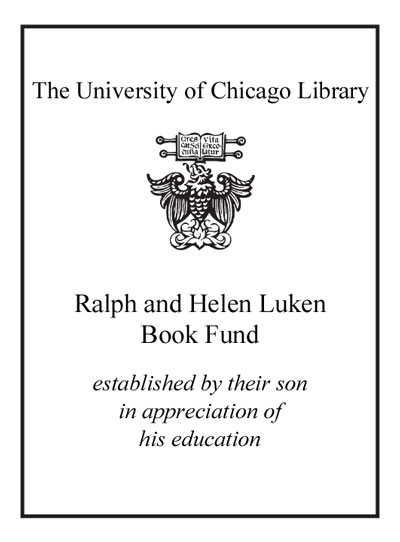The effectiveness of World Bank support for community-based and -driven development : an OED evaluation /
Saved in:
| Imprint: | Washington, D.C. : World Bank, 2005. |
|---|---|
| Description: | xviii, 199 p. : ill. ; 28 cm. |
| Language: | English |
| Series: | Operations evaluation studies World Bank operations evaluation study. |
| Subject: | |
| Format: | Print Book |
| URL for this record: | http://pi.lib.uchicago.edu/1001/cat/bib/6228522 |
Table of Contents:
- Acknowledgments
- Foreword
- Executive Summary
- Acronyms and Abbreviations
- 1. Origin, Scope, Design, and Methodology of Evaluation
- Scope
- Design
- Methodology
- Some Limitations of the Study Design
- 2. The CBD/CDD Portfolio
- Temporal, Regional, and Sectoral Distribution of the Portfolio
- Ways That CBD/CDD Projects Differ from Those in the Non-CBD/CDD Portfolio
- 3. Outcome of Bank-Supported CBD/CDD Projects
- Outcome Ratings
- Relevance
- Efficacy
- Targeting the Poor Is Not Enough to Reach the Poor
- Efficiency
- 4. Institutional Enhancement and Sustainability
- Institutional Enhancement
- Sustainability
- 5. Bank Operational Policy Requirements, Processes, and CBD/CDD Interventions
- The Bank Has Attempted to Adapt Its Policies to Design and Implement CBD/CDD Projects
- Bank Capacity to Ensure Effective Implementation of CBD/CDD Interventions
- 6. Conclusions
- 7. Recommendations
- Annexes
- Annex A. Definition of "Community"
- Annex B. Results Chain for World Bank CDD Projects
- Annex C. World Bank Guidance on Key Design Principles for CDD
- Annex D. Study Framework, Methods, and Instruments
- Annex E. The Universe of CBD/CDD Projects and Its Distribution
- Annex F. Sample of CBD/CDD and CDD Projects
- Annex G. OED Ratings of Completed Projects
- Annex H. Focus on CBD/CDD and Related Aspects in Bank and Borrower Strategy
- Annex I. Central Government and Local Government Surveys
- Annex J. Efficiency
- Annex K. Nkayi District Formal and Informal Systems
- Annex L. Results of Bank Staff Survey
- Annex M. Methodology for Community-Level Data Collection and Analysis
- Annex N. Enhancing Community Capacities
- Annex O. Poverty Targeting
- Annex P. Evidence from Fieldwork on Sustainability
- Annex Q. Safeguard Thematic Study: A Summary
- Annex R. Advisory Committee Comments
- Annex S. Management Response
- Annex T. Chairman's Summary: Committee on Development Effectiveness
- Endnotes
- References
- Boxes
- 1.1. Primary Data Collection for the Evaluation of CBD/CDD Projects
- 3.1. Change in Social Capital and Empowerment as a Means of Assessing the Community Capacity-Enhancing Impact of Bank CBD/CDD Interventions
- 3.2. Highly Satisfactory Aspects of Design and Implementation in Selected CBD/CDD Projects
- 3.3. Local Champions Can Effectively Use Bank CBD/CDD Funds: A Case from Ghana
- 3.4. Example of Sophisticated Poverty Targeting in Two Recent Vietnam CDD Projects
- 4.1. Inconsistent Strategies: The Road Sector Experience in Nepal
- 4.2. Bank CDD Projects Have Added to the Proliferation of Municipal Councils in Rio Grande do Norte (Brazil)
- 4.3. Why Formal Groups Do Not Last Long
- 5.1. The Meaning of the Environmental Categories
- 5.2. The Fiduciary Challenge: The Case of Vietnam
- 5.3. Some Monitoring and Evaluation Features to Emulate: The Case of the Indonesia Kecamatan Development Project
- Figures
- 1.1. The Universe of CBD/CDD Projects
- 2.1a. Bank Commitments to Projects with CBD/CDD Approaches Have Grown
- 2.1b. Africa Has the Largest Share of Projects with CBD/CDD Approaches
- 2.2. Communities Have More Responsibility in CDD Projects
- 3.1. Outcome Ratings of CBD/CDD Projects Have Been Better Than Those of Non-CBD/CDD Projects
- 3.2a. CBD/CDD Projects in the Latin American and Caribbean Region Have Done Better Than Projects in Other Regions
- 3.2b. CBD/CDD Projects in Education and Social Protection Do Better Than Projects in Health and Rural Development
- 3.3. CBD/CDD Is Increasingly Important in Country Programs
- 3.4. Community Priorities Are Better Met When There Is Greater Choice
- 3.5. Focus Groups Report Significant Decision Making by Local Leaders
- 3.6. Subproject Cycle Is Too Short for Meaningful Enhancement of Community Capacity
- 3.7. CBD/CDD Projects Cost the Bank More Than Non-CBD/CDD Projects
- 4.1. Low-Income Countries Work with More Partners
- 4.2. Sustainability Has Been Consistently Lower for CBD/CDD Projects but Is Improving
- Table
- ES.1. Overview of CBD/CDD Strengths and Weaknesses

